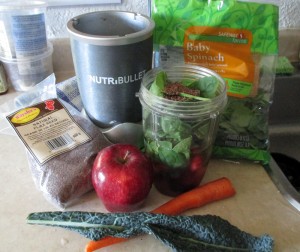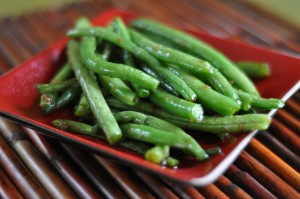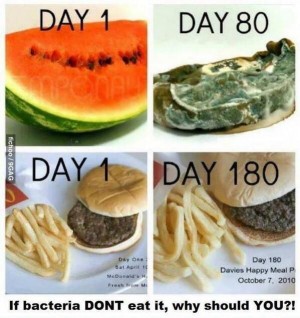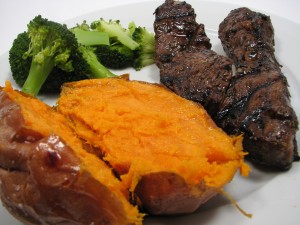5 Ways to Eat Better
An important and often overlooked part of the BJJ lifestyle is eating a healthy diet.
Most everyone knows that they SHOULD eat a healthier diet, but with so much conflicting advice on which is the best way to eat and which foods are unhealthy, where do we start? Instead of prescribing a specific meal plan or “diet of the month”, let’s discuss some principles that will help you make better choices the next time you go to the supermarket.

1) Drink Green smoothies
Starting to consume Green Smoothies was the single best addition to my training in the last several years!
There are many healthy ingredients that you can put in your smoothie but perhaps the most important is the centerpiece: kale.
* Note – You need to have a higher end, powerful blender like a Vitamix, Blendtec or Nutri Bullet (what I use). Your household blender lacks the power to reduce the vegetables to a smooth consistency > invest in your health and buy a quality blender! I call this recipe “The Beetdown”
I call this recipe “The Beetdown”
handful of frozen mixed berries
1/2 apple
2-3 leaves of kale (spinach is my 2nd choice)
slice of raw, peeled beet
1/2 cup of acai juice (plain water is ok)
carrot
1 tbsp of flax seed
water
30 seconds in the blender until you have smooth consistency
You may want to add a different veg or fruit – but resist the urge to add some of everything. Simple and fresh is the key.
2) Everyday eat some raw foods
Now this is common sense stuff here folks. The further the food is from the farmer’s field, the more it has degraded in nutrient value; it literally starts to degrade as soon as it is picked!
Now which would be the better choice to preserve the volatile nutrients in those green beans (one of the top foods for bjj’ers)?
Boiling them until they are reduced to a limp, gray, soggy lump?
Lightly steaming until cooked but still retaining a crunch and bright green color?
When making the choice to eat more vegetables, always try to eat them in their rawest state.
“…many of the nutrients from vegetables can get leeched during cooking. The key is to watch out for cooking vegetables too long, and with too much water, says Filardo. If you cook vegetables gently — and without a great deal of water — you will help protect the water-soluble vitamins. Filardo recommends blanching your veggies, which is when you quickly cook vegetables in boiling water, and remove them when they’re still very crisp, to help preserve the color and nutrients. The same principle applies if you’re going to steam or microwave vegetables.”
Source: webmd.com
3) Choose unrefined foods over processed
I read a great tip on how to guide your food purchases at the supermarket: “shop on outside walls of the supermarket.”
Think about this for a moment: the produce, dairy and butcher / meat are usually located on the outer walls of most supermarkets. The shelves in the inner part of the store feature mostly processed foods that do not require refrigeration and have expiration dates far into next year.
Your diet should be as unrefined as possible: the more sets of hands that have touched your food, the more likely that they have added preservatives, salt, and sugar and removed the fibre.
A great way to remember this concept is: “real food goes bad!”
My clients ask all the time, “how do you know what food is good and what isn’t?”… fairly simple statement – real food goes bad.
Why?
The enzymes in foods that cause them to rot at room temperature are the same enzymes that we actively need in our bodies to keep it functioning well. So think this – if our diet is void of active enzymes we don’t absorb nutrients and we don’t digest our food properly.
Hence…”Real food goes bad.”
source: prescribe-nutrition.com
4) Select nutrient-dense foods
Mother nature provided us with a pretty simple rule of thumb when it comes to our vegetables: brightly colored fruits and vegetables are more nutritionally dense!
bright oranges of carrots, sweet potatoes and squash
deep greens of kale, broccoli and spinach
vivid reds of tomatoes and sweet peppers
For example: the pale, translucent iceberg lettuce pales (pun intended) in nutrient comparison to its darker green relatives romaine and spinach. If you are making a salad, select the greens with the most nutritional “bang for your buck.”

5) Eat at home more often than eating out
It is unfortunate that the most convenient foods are also the least healthy. When you are out and find yourself hungry, most fast food is obviously a poor choice.
Even in better restaurants they are in the business of selling great TASTING food / not necessarily the healthiest – which involves deep frying, butter, emphasis on high calorie sauces and other high calorie flavor enhancers.
When you shop and prepare food at home – you know EXACTLY what you are putting in your body and save big $$$ also! If you look at your bank statement at the end of the month you will be astonished at how much expensive eating out can add up to.
Bodybuilders have long known that preparing meals ahead of time is the best way to ensure that they will adhere to their dietary regimen. If you bring it with you, you will not have to resort to eating something low quality.
Tupperware (or other plastic food storage containers) are your best friend in storing and bringing meals with you.

6) Unpronounceable ingredients on the label
Advertisers are really clever. They know that if they have a packaging depiction of a farmer’s field with gently swaying stands of grain or a country house with a garden beside it, the consumer will associate it with fresh, farm-grown foods.
Most so-called granola bars are little more than candy bars with chocolate chips and little nutritional value. But the packaging attempts to send the message that these are wholesome choices.
I knew a woman who would drink Snapple iced tea all day instead of eating real food at work. When it was suggested to her that this was not a sound nutritional habit, she responded with, “Well, there is a picture of fruit on the bottle!”
Don’t be deceived by misleading advertising and glossy label depictions of actual food on heavily processed and nutritionally bankrupt “food like” substances.
Credits: Mark Mullen
Gracie Barra Black belt based in Taipei, Taiwan
Twitter: @MarkMullenBJJ
